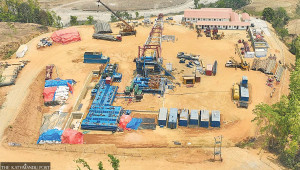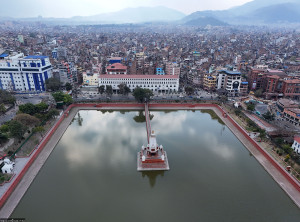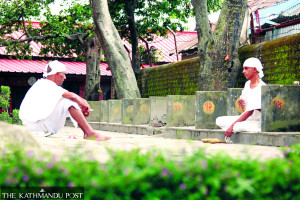Columns
Smoothening the transition
Nepal is accomplishing the goal of graduating from the LDC status, but its readiness will be tested.
Hanaa Singer-Hamdy
I embarked on a journey from Jumla to Mugu in 2012, trekking alongside Apa Sherpa, famously known as ‘Super Sherpa’ for his record 21 ascents of Sagarmatha. Our mission was to observe the impact of climate change on children and their families. The children I met along the way were often small and underweight, stark indicators of Nepal’s high malnutrition rates, with 41 percent of children stunted and 29 percent underweight. As we traversed the rugged terrain, I encountered yaks and mules laden with provisions from Nepalgunj, destined to sustain the people of Karnali's remote districts.
In 2011, a year prior, Nepal had embraced the ambitious goal of graduating from Least Developed Country (LDC) status. Scepticism abounded, but I believed there was no alternative if Nepal aspired to improve its children’s and their families’ lives. To exit the list of the then 46 LDCs, Nepal needed to combat poverty, malnutrition and the premature deaths of children and pregnant women and to increase investment for quality education, improved connectivity and increased productivity as well as trade competitiveness. The only viable path was multiplying the efforts by having a clear plan in sight.
During a visit to Surkhet in 2023, I saw trucks roaring towards Karnali’s hills and mountains, laden with supplies. In the past 12 years, Nepal’s development milestones have been remarkable. Motorable road networks now connect the entire country. The maternal mortality rate plummeted to 151 per 100,000 live births by 2023, under-5 child mortality had dropped to 28 per 1,000 in 2019, and stunting had decreased to 32 percent in 2019. Its per capita GNI reached $1300 in 2024 from $320 in 2009. The progress is undeniable.
Not all roads to the country’s prosperity are smooth. The country is experiencing a rising trade deficit; its merchandise trade balance negatively grew from $4,278 million in 2010 to $12,439 million in 2022. It has consistently performed weakly in the share of manufacturing to GDP, dropping to 5 percent in 2023. In the last two years, Nepal performed the worst in domestic revenue mobilisation, limiting finance for its sustainable development priorities. In the last fiscal year, approximately 0.7 million Nepalis left the country for foreign employment.
However, Nepal’s non-traditional development pathways, along with significant growth in the service sectors, have become a new normal. International trade witnessed a shift from labour-intensive manufacturing goods to high-tech and digital services. As remittance inflows offset its trade deficit, the country can plan better to enable investment of remittances to enhance productive capacity and trade competitiveness in service sector focusing on digital services.
The country can also tap into its improved status. In the World Bank category, Nepal is upgraded to lower-middle-income country status. On the UN’s multidimensional development parameter, the country is scheduled to exit the LDC category in 2026. The improvement in the country’s international rankings and status not only sends off a message of market readiness and creditworthiness but also boosts national confidence. Backstopping this with a sovereign credit rating will boost investors’ confidence, and concluding the transitional justice process, ensuring victims are at the centre, will place Nepal as a champion for both peace and development.
Yet, progress comes with careful planning and honest implementation to manage the additional responsibilities. Nepal will face stricter international trade standards and lose access to certain international support measures and multilateral funds as a non-LDC. Impact assessments have estimated a post-graduation loss of around 4.3 percent of total exports. Overcoming these barriers will be a significant challenge. The next two years are crucial for Nepal to harness the momentum of LDC graduation as a pivotal point in its development trajectory.
The Government has developed the Smooth Transition Strategy (STS) to navigate post-graduation transitions. Despite being the first generation of such strategies, Nepal’s STS outlines a clear roadmap for its actions as a developing country. The STS encompasses measures to enhance productive capacity, reform policies for multilateral trade compliance, create decent jobs, and uphold labour rights and environmental conditions for trade competitiveness. These actions align with global sustainable development goals, underscoring Nepal's commitment to international standards.
However, Nepal's readiness will be tested in implementing the STS, which demands collective efforts and shared responsibility. Past cooperation between the government, its people, and development partners has been pivotal. Nepal has successfully navigated the peace process, mainly through its efforts and support from the international community. Drawing lessons from these experiences will be vital in charting a new development course.
Collective efforts to implement the STS can be sparked through internal and external endeavours. Internally, the country must introduce and implement reforms in domestic policies to cope with new challenges. As a committed member of the multilateral system, Nepal can engage its development and trade partners in aligning domestic policies with multilateral norms. This openness will provide opportunities for the country to actively engage in external processes and to influence international financing and trade architectures—a critical step in sustaining economic momentum post-graduation.
As we cross the halfway mark for the Sustainable Development Goals, the United Nations Secretary-General has called for a renewed social contract at the Summit of the Future in September. The forthcoming ‘Pact of the Future’, among other agreements, emphasises the need for international financing and trading system reforms. Nepal, which champions principles of non-alignment, can play a crucial role in reshaping international rules to drive structural transformation of both LDCs and graduating LDCs. As chair of the Global Coordination Bureau of the LDCs and vice-chair of the UN Economic and Social Council, Nepal is also responsible for leading engagements with the international community.
As we stand at the precipice of monumental change, the success of Nepal in capitalising on these global processes, such as its forthcoming graduation and the Summit of the Future, hinges on meaningful engagement with development and trade partners. The United Nations in Nepal is ready to support these efforts, and therefore, along with fellow Resident Coordinators, I am fostering collaboration among the graduating cohort of 2021—Nepal, Lao PDR, and Bangladesh—and their dialogues with experts to smoothen the transitions.
This transition demands transformative dialogues, policy reforms, and honest efforts to the implementation. Nepal stands at a critical crossroads, and the choices we make now will reverberate through the annals of history. We must rise to the occasion, for the future of our nation and the generations to come depend on our courage to forge a new prosperous path.




 23.39°C Kathmandu
23.39°C Kathmandu




.jpg&w=200&height=120)


.jpg&w=300&height=200)







